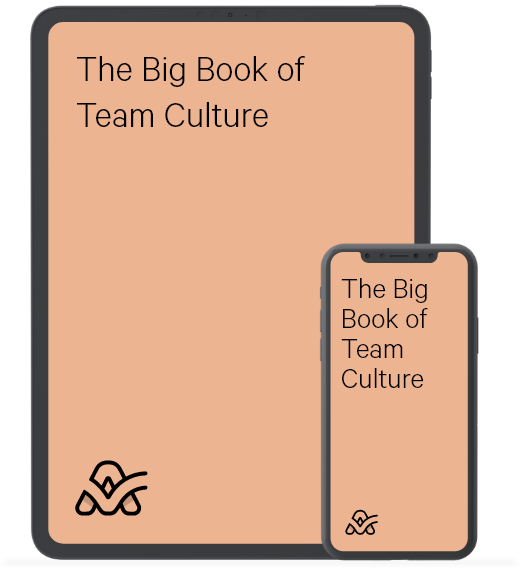In an ideal workplace, communication between coworkers would be professional, open, and friendly. Projects would be completed on time, while all key players would be fully informed about their roles and responsibilities. Questions would be asked clearly and answered promptly. However, the majority of workplaces don't operate that smoothly. Missed deadlines, poorly planned projects, conflicts between team members, missing or scattered files, and delayed feedback are only some of the difficulties people face daily.
Is your business facing the same issues? Maybe your team is lacking in the communication department, or poor communication is affecting your business significantly. If you ticked all the boxes, it's time to focus on your team's communication and bring everything into one place.
How Does Effective Team Communication Work?
Good team communication doesn't only rely on strategies, but different communication styles. If you want to improve team communication, you need to understand that people communicate in different ways in the workplace.
Analytical style
Employees who love an analytical style focus more on details and data. They prefer their decision-making process to be backed up by concrete figures and facts, while they completely rule out arguments based on emotions. They always put logical reasoning in front of emotional appeal, which makes them sometimes seem detached. However, they thrive in a transparent and open work environment where they have all the necessary information and can identify where data comes from.
Intuitive communication style
On the other hand, we have people who prefer an intuitive communication style and focus more on a big-picture approach than nitty-gritty details. They are more likely to contribute to creative solutions and think outside the box. While they aren't into figures and details, they still want to hear the "why" behind the project and how it fits into their strategy.
Personal communication
Those with a personal communication style often assume a diplomatic approach and are great at resolving and spotting conflicts. They see communication as a personal connection and excel in non-verbal communication as well. Engaging in data won't interest a personal communicator as much as an emotional connection.
Functional communication
Similar to the analytical communication style, functional communicators are more detailed-oriented and follow a step-by-step plan. They want to know all the details about a project to intercept if anything goes wrong. When you discuss a new idea, functional communicators wish to understand how you plan to execute it. While functional communicators might seem rigid and a kill-joy to an intuitive thinker, they are actually an essential part of a team.
What Are the Benefits of Effective Communication in the Workplace?
Despite diverse tech innovations that have recently emerged to facilitate conversation, many companies are still struggling with effective communication. If you manage to implement effective communication strategies into your organization, you can reap many benefits.
Increased productivity
All business leaders want to achieve effective group communication and have a productive team. Poor communication leads to gaps in the workplace and confusion. If we can't communicate properly, we'll have to make a crucial decision on our own. If one isn't skilled enough, it means guessing what the right next step is, which leads to further confusion. Therefore, to experience the benefits of effective communication, everyone needs to be on the same page.

Instant Messaging Cheat Sheet
Great working environment
Have you ever been in a situation where your email and phone system were down at the same time? This can make you feel stuck, helpless, and frustrated. Eventually, there is nothing you can do but wait to reconnect again. That's why business managers invest in effective team communication to promote a more positive and happier environment. You can avoid being frustrated once you know that the entire team supports you.
More innovations
An excellent way to encourage open communication is creating a culture where people can speak freely and openly. When people have the freedom to express their ideas, they are more likely to come up with new concepts and innovations.
Enhanced loyalty
Many factors can influence employees to leave your company. Some will do it because of money, others because the position is closer to their home, but poor communication can be one of the leading drivers that make them resign. If you hardly speak to your team members or struggle to get your voice heard, there is not much loyalty left towards your employer. But, if you are always part of the conversation, you might consider this company as part of your family.

How do you achieve effective team communication?
If you wish to boost teamwork, it's time to address your communication style. Even if you work with brilliant people who aren't very talkative, you can still accomplish excellent teamwork communication. One of the first steps is to establish a respectful, collaborative, and open working environment. Keep in mind that everything starts from the top and the employees look to their mentors and leaders for direction. As a leader, you can do so many things to encourage open communication in teams, but start with these:
- Set the right tone of transparency and clear communication.
- Encourage new ideas, debate, take part in and provide honest feedback on team projects.
- Even if they don't go well with your opinion, respect new ideas and feedbacks.
- Reward and recognize honest and open communication.
By following these steps, you set up an example for your employees, meaning that all their honest opinions are welcome. At the same time, you are breaking down an invisible barrier and allowing your employees to communicate freely without feeling embarrassed or reprimanded. Once the communication starts to flow, your team becomes collectively more productive, which is the goal. While sharing all relevant information, knowledge, and feedback, your team members will efficiently create a product that is shaped by diversity.
How to Improve Team Communication?
Set up an open-door policy: it enables everyone to ask questions, state concerns, and propose new ideas at any time.
Provide feedback: resort to constructive criticism instead of making orders. "Fix this" isn't going to help your project. Try to be effective and equally efficient when providing feedback.
Encourage active listening: it improves mutual understanding and empathy. When team members listen actively, they are more likely to grasp the intent behind their colleagues` messages and respond appropriately. It reduces misunderstandings and conflicts, and builds trust and respect within the team, leading to a more cohesive and productive work environment.
Be clear about responsibilities: no one can complete an assignment if they don't know what task they're responsible for. Make sure that your team members understand the scope of the project and what is expected from them.
Do fun stuff: team building projects are an important part of every company. They will boost morale and make everyone feel like part of the group.
Perform communication training: yes, they actually exist and can be quite beneficial when improving inter-team communication. These training don't only cover basic things but also focus on presentation skills, managerial skills, and business writing.
Decide on communication form: find out which communication form is best for your team. For instance, if you are working remotely, a video conference might be a great solution.
Use project management software: they provide transparency and allow team members to track a project's progress.
Identify a team leader: making it clear from the start who is the team leader facilitates teamwork and ensures better communication in groups. You will know who to go to when a problem or a question arises.




